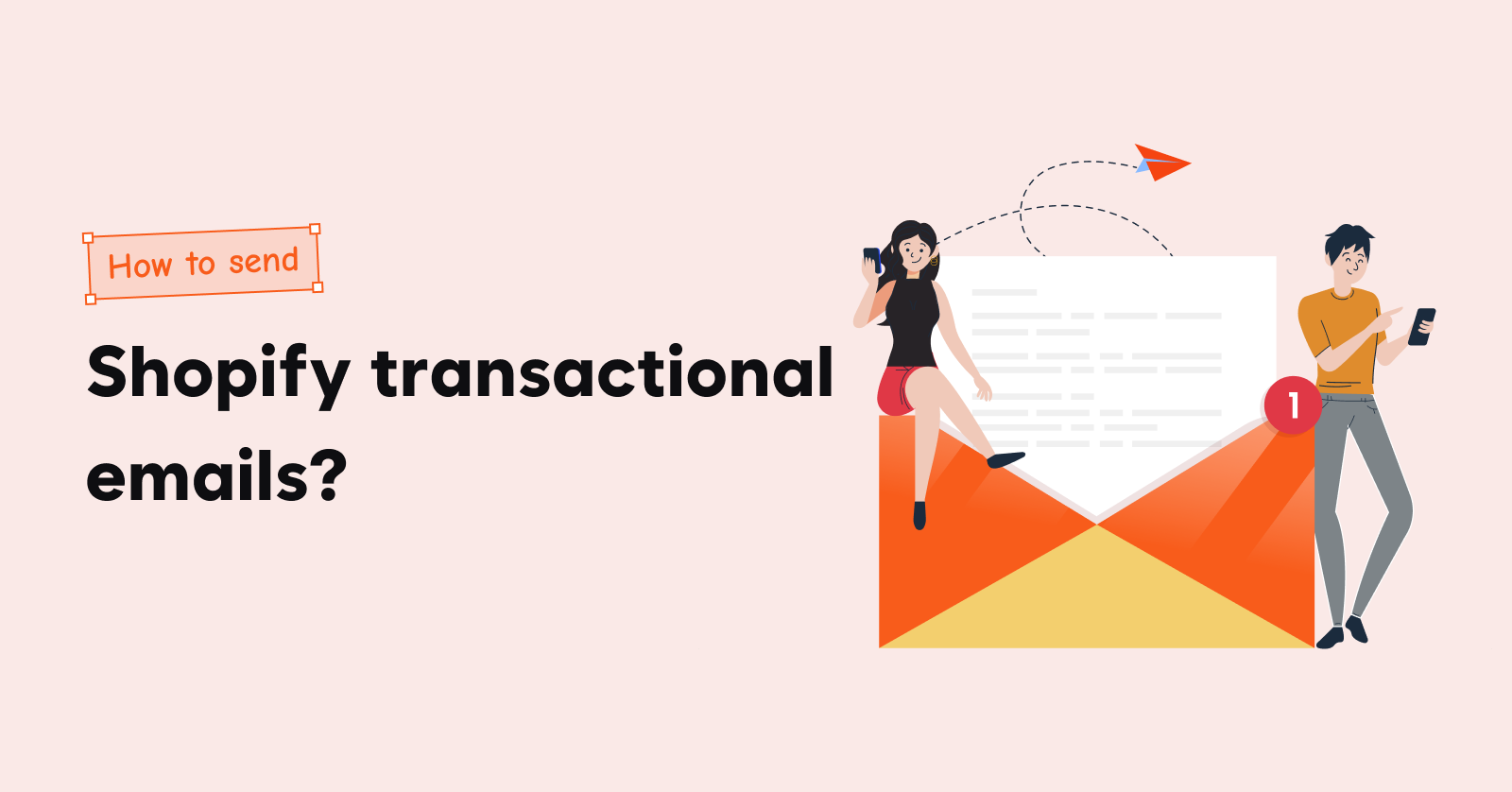Shopify Email vs. Klaviyo – which one actually delivers?
On one side, Shopify Email keeps things simple, built right into your store. On the other, Klaviyo dominates with advanced automation, segmentation, and deep analytics.
But does paying more guarantee bigger returns? Which solution truly solves the pain points of juggling unsubscribes, optimizing deliverability, and maximizing ROI?
Let’s unpack the pros, cons, pricing structure of Shopify email marketing vs. Klaviyo – so you can pick the tool that’s right for Shopify email marketing.
Save up to 65% with Retainful. Switch for simple pricing, reliable support and easy-to-setup automation.
Shopify Email vs. Klaviyo Comparison Chart
| Criteria | Shopify Email | Klaviyo |
| Free plan | Requires a paid Shopify Plan No additional cost upto 10,000 emails | 500 emails/month and upto 250 contacts |
| Pricing plans | Billing based on email sends | Billing based on both email sends and active profiles |
| Email automation | Basic and single step automation | Multi-step automation with conditional splits |
| Email templates | Limited ready-made templates | Very extensive template library for varied ecommerce occasions |
| Integration | Integrates with Shopify | Integrates with Shopify and other Shopify apps |
Pros and Cons of Shopify Email and Klaviyo
1. Shopify Email – Pros and Cons
Pros:
- Native Integration: Built directly into Shopify, making setup and management easier for store owners.
- Simplicity: Straightforward interface; minimal learning curve for beginners.
- Cost-Friendly: More affordable, with a simple pay-per-email pricing structure.
Cons
- Limited Functionality: Lacks advanced automation options like multi-step workflows and hyper-segmentation.
- Basic Analytics: Reporting features are relatively simple compared to specialized Shopify email marketing platforms.
- Fewer Templates & Personalization: Offers fewer customization options and dynamic content features.
2. Klaviyo – Pros and Cons
Pros:
- Robust Automation: Advanced workflows, triggered sequences, and detailed customer journeys.
- Deep Segmentation & Personalization: Segment email list by user behavior, purchase history, and browsing patterns.
- Powerful Analytics: Comprehensive metrics and revenue-tracking to gauge performance.
Cons:
- Higher Pricing: Can become expensive as contact lists grow.
- Steeper Learning Curve: More advanced features require time to master.
- Potential Overkill for Small Stores: Some smaller merchants might not need the full range of features.
Related Reading: Learn how to do Shopify email marketing and create successful campaigns: Shopify Email Marketing: A Guide to Create Email Campaigns.
Pricing Comparison of Shopify Email Marketing vs. Klaviyo
1. Shopify Email – Pricing Structure
- Included with Shopify: There’s no separate monthly subscription specifically for Shopify Email; you just need any paid Shopify plan (Basic, Shopify, Advanced, or Plus).
- Free Monthly Email Sends: You typically get 10,000 free emails per month.
- Per-Email Cost: After the free monthly allocation, emails cost around $0.001 USD per email (i.e., $1 per 1,000 emails).
How It Scales:
- Low-Volume Merchants: If you send fewer than 10,000 emails a month, Shopify Email effectively costs you $0 beyond your usual Shopify plan.
- Medium-Volume Merchants: If you grow and send 50,000 emails in a month, you’ll pay for the 40,000 extra emails. That’s $40 (40,000 × $0.001).
2. Klaviyo – Pricing Structure
Free plan:
In the free plan of the Klaviyo pricing, email sends is limited to 500 emails/month and you can import 250 contacts. You also get free 150 SMS credits and unlimited push notifications.
You get only email support for the first 60 days.
The existing Klaviyo pricing as of January 2025:
| Contacts | Pricing per month (Email Plan) |
| 2000 Contacts 20000 emails / mo | $60/month |
| 20,000 Contacts 200,000 emails / mo | $375/month |
| 50,000 Contacts 500,000 emails / mo | $720/month |
| 100,000 Contacts 1,000,000 emails / mo | $1380/month |
Klaviyo billing based on both active profiles and email sends.
Pricing will now include all active profiles in your database, even if you don’t email or SMS them regularly.
“Active” profiles include all email addresses that are not unsubscribed, such as unconfirmed newsletter sign-ups, spam contacts, and inactive recipients who no longer read your emails.
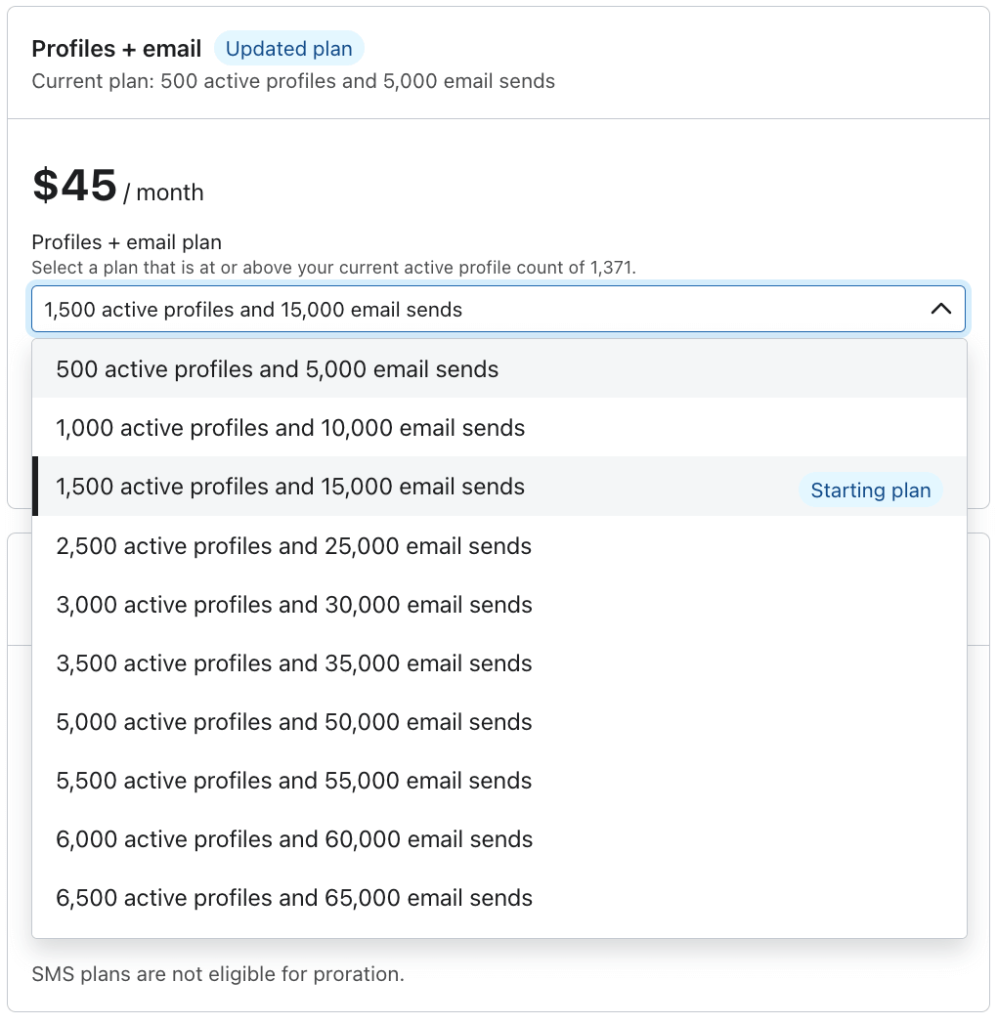
Related Reading: Read out complete analysis of Klaviyo Pricing and new changes: Klaviyo Pricing 2025: What’s New and How It Affects You?
Feature comparison of Shopify Email and Klaviyo
1. Email automation
Shopify Email:
To create email automation workflows in Shopify Email, you need to integrate it with Shopify Flow app.
With only Shopify Email, you can send email campaigns like product launch emails, email newsletters, announcements, and more.
To send automated emails like welcome email series, abandoned cart, thank you email you need Shopify Flows app.
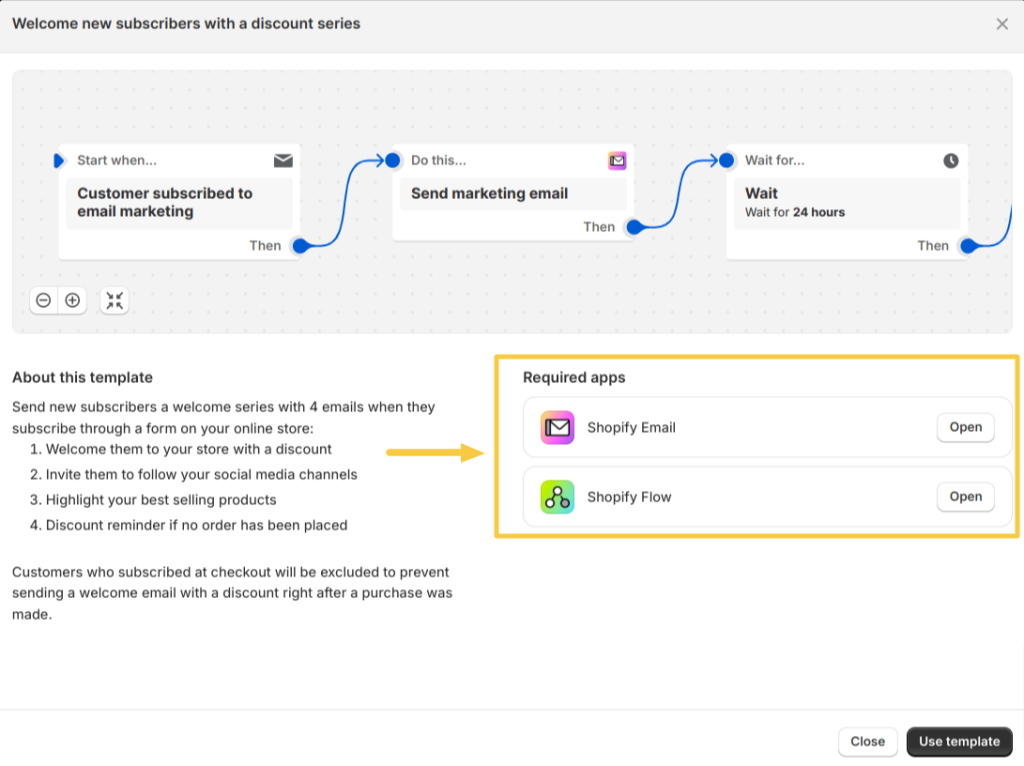
So, how does Shopify Email with Shopify Flows app integration perform for automating emails.
- Basic Editor Only: Automations are mostly single-step or linear (e.g., send an email after X event).
- Limited Workflow Visualization: You won’t find a drag-and-drop canvas; most setup is done through simple settings pages.
- Limited Customization: You can edit the content, but deeper email personalization or event-based triggers (e.g., browse abandon) may not be readily available.
Suitable for store owners who want simplicity and minimal setup. Almost plug-and-play, especially for basic campaigns.
But can be very limiting for advanced Shopify marketing automation like sending a product recommendation email based on a product a customer viewed in a store.
Klaviyo
Klaviyo has an intuitive drag-and-drop interface that allows you to create multi-step automation workflows visually.
Klaviyo’s drag-and-drop automation builder offers elements like webhooks, product blocks, and review integrations that let you design sophisticated automation flows.
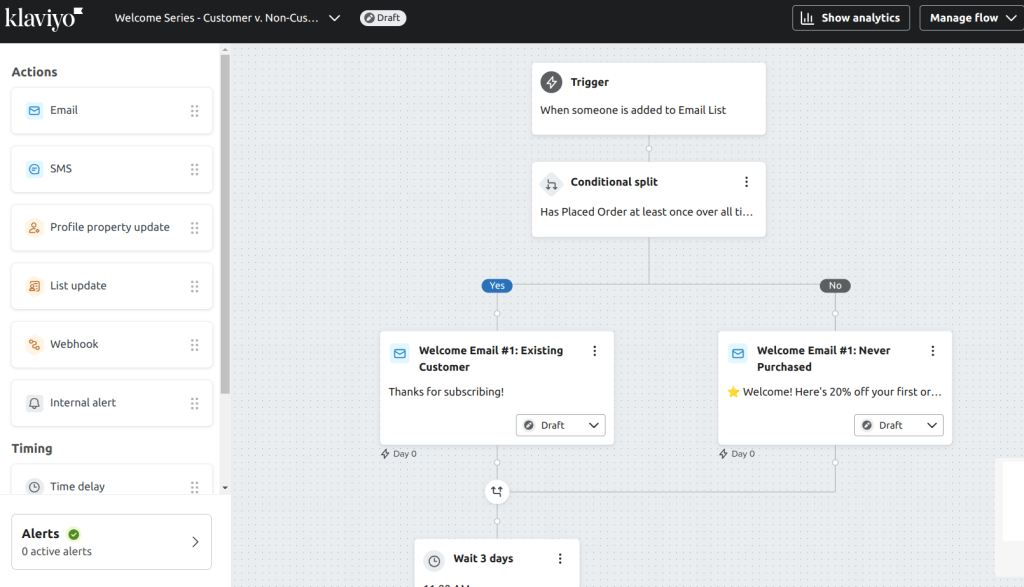
Here is how Klaviyo’s marketing automation builder compares to Shopify Email:
- Conditional Splits: Segment and branch automations based on numerous factors (purchase frequency, site visits, cart value, etc.).
- Live Flow Mapping: Real-time visualization of all steps, triggers, and conditional logic, making it easier to diagnose or tweak flows.
- Dynamic content: Each template can be further tailored with dynamic content, personalization tokens, and conditional blocks (e.g., show product recommendations if someone bought a specific item).
The visual flow builder and advanced features come with a steeper learning curve. It requires some technical know-how: Setting up event-based triggers or multi-segment flows demands familiarity with e-commerce data.
2. Ready-made templates
Shopify Email
Provides a more limited selection of pre-designed Shopify email templates, generally focused on straightforward campaigns (announcements, basic product showcases).
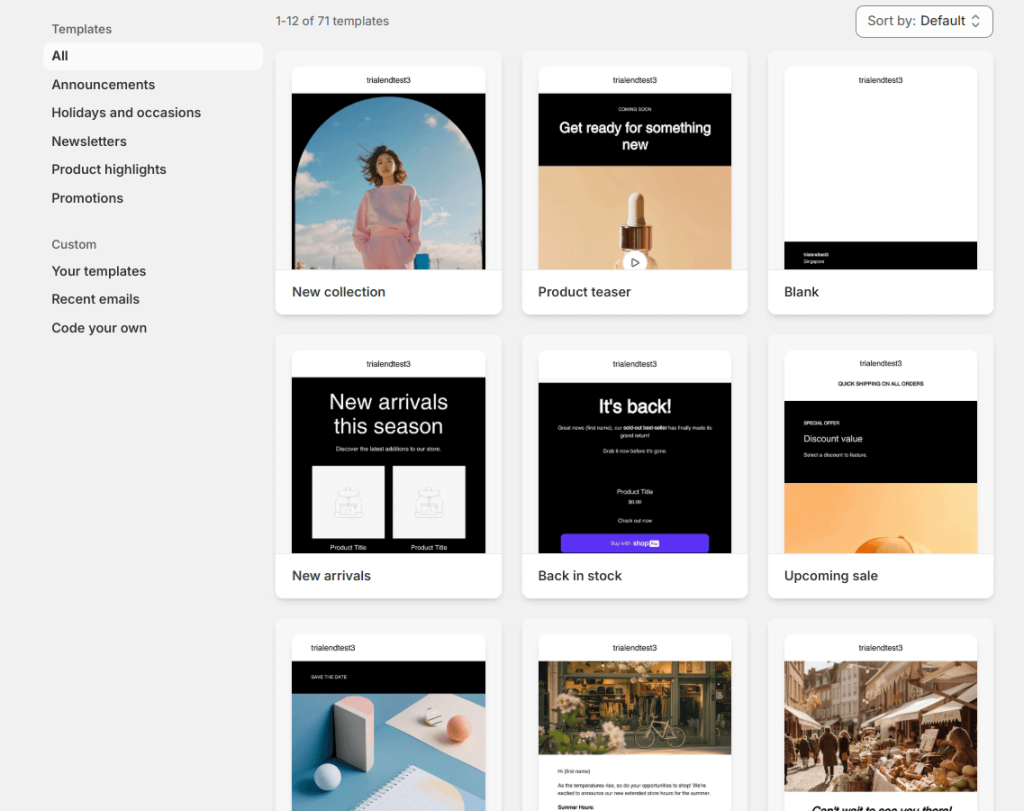
Klaviyo
Offers a larger, more diverse library of ready-made templates, catering to everything from seasonal campaigns to advanced flows like welcome series, abandoned cart, and VIP promotions.
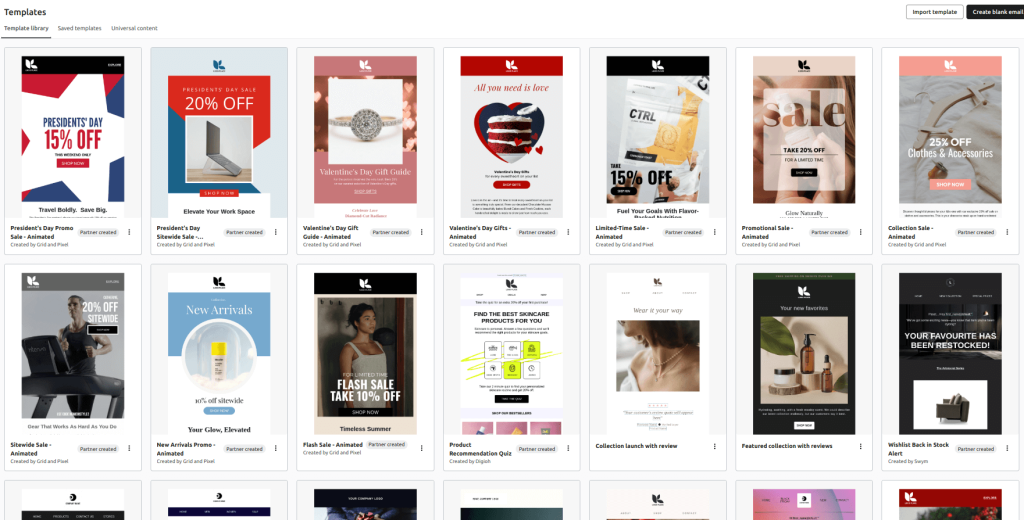
3. Drag-and-drop email editor
Shopify Email
Shopify Email’s editor provides a straightforward block-based interface with basic text, image, and product modules.
While you can still create clean, on-brand emails, you won’t find the same level of advanced functionality like in Klaviyo – such as dynamic blocks for reviews or multi-layered personalization.
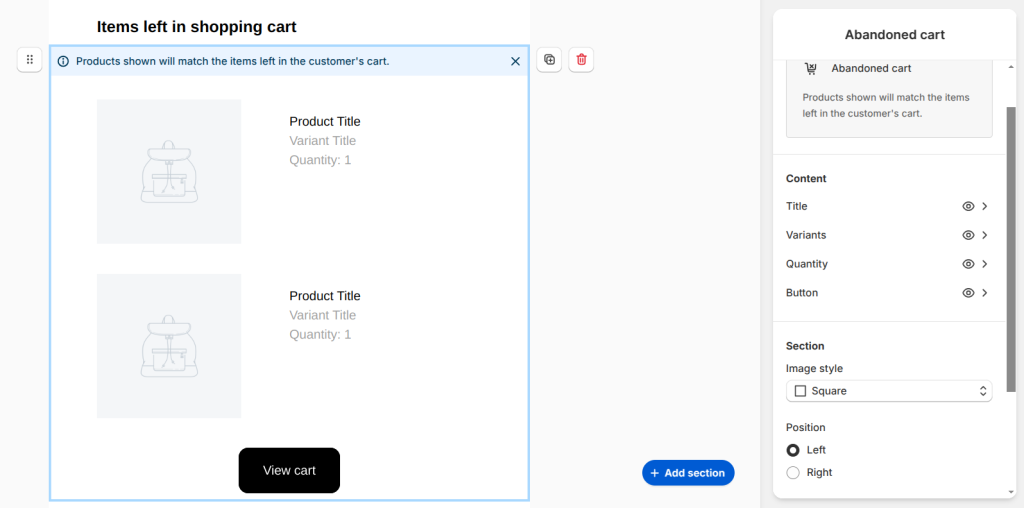
Klaviyo
Klaviyo’s drag-and-drop email editor is more feature-rich and geared toward advanced customization, with blocks for dynamic product recommendations, social proof (reviews), and personalized content sections.

4. Email personalization and dynamic content
Shopify Email
Basic merge tags (customer name, order information) are possible, but dynamic recommendation blocks and advanced email personalization are limited compared to Klaviyo.

Klaviyo
Many templates include dynamic product recommendations, personalized coupon codes, and integration with your store’s data (e.g., browse abandonment, purchase history). This allows you to serve highly relevant offers.
Related Reading: Explore 10 best Klaviyo alternatives for ecommerce in our comparison guide: 10 Best Klaviyo Alternatives & Competitors for 2025.
4 Best Klaviyo Alternatives for Shopify
1. Retainful
Retainful is the best Klaviyo alternative for Shopify which is tailor-made for e-commerce businesses. It is an all-in-one platform to cover all your bases in email marketing – acquire, nurture and retain customers.
With its abandoned cart recovery feature, many businesses have seen a significant increase in recovery rate.
It has easy-to-setup automation that doesn’t require a 3-page manual to set it up.
Customize Shopify emails without any hassle with an intuitive drag-and-drop email editor and ready-made email templates.
Here is how Retainful compares to Klaviyo:
| Retainful | Klaviyo |
| 57.8% more affordable than Klaviyo. Send 20,000 emails for just $19. | Sending 15,000 emails costs $45 |
| Easy-to-setup email automation | Complex visual automation builder with a steep learning curve. |
| Suitable for small and medium-sized e-commerce businesses. | Suitable for only large businesses |
Compare and Decide: Check out out detailed comparison between Retainful vs. Klaviyo – A Detailed Comparison.
- Free plan – 500 emails/month
- $19/month – 20,000 email/month
- $49/month – 50,000 emails/month
2. Omnisend
Omnisend is an omnichannel marketing platform for Shopify that is tailored to e-commerce businesses. It allows you to set up automation workflows for creating promotional emails, cart abandonment emails, post-purchase emails, and more.
This Klaviyo alternative for Shopify allows you to include dynamic content in your Shopify emails using customer data and behavior, ensuring each recipient receives a tailored message.
This Shopify email marketing service offers an email template library, or you can create one on top of the pre-built layout.
Price tiers and Email Volume:
- Free plan: 500 Emails
- $16/month: 6000 Emails
- $59/month: Unlimited Emails
3. Mailchimp
Mailchimp is a full-fledged digital marketing hub, giving you multichannel campaign support, website-building tools, reports, and automated email marketing.
Mailchimp boasts advanced automation and segmentation features like multiple triggers, predictive analytics, and more.
One of Mailchimp’s most outstanding features is that you can have a taste of almost all its key features with a free plan.
Price tiers and Email Volume:
- Free plan: 1000 Emails
- $4.60/month: 5000 Emails
- $6.87/month: 6000 Emails
- $137.41/month: 150,000 Emails
Related Reading: Compare Shopify Email vs. Mailchimp in detail: their pricing, features, and USPs in our blog: Shopify Email vs. Mailchimp – A Detailed Comparison
4. Yotpo
Yotpo Email integrates reviews, UGC, loyalty, and email marketing in one platform.
Segment and target based on user engagement (reviews submitted, loyalty points, etc.), leading to more personalized email campaigns.
In this Klaviyo alternative for Shopify, the billing is based only on the emails sends not contacts.
Pricing:
- Free – 10,000 emails
- $15/month – 20,000 emails/month
- $135/month – 100,000 emails/month
Choose Retainful for affordable email marketing, no setup headaches and pricing that doesn’t puzzle you every month.
Wrapping up!!
So, Shopify Email vs Klaviyo – who wins?
If you want simple, low-cost, and built-in, Shopify Email gets the job done. No fancy automations. No deep segmentation.
But if you’re a large ecommerce businesses who are serious about personalization, advanced automation, and dynamic content, choose Klaviyo.
Also Read:
- How to Customize Shopify Order Confirmation Emails? – A Step-by-Step Guide
- How to Recover Shopify Abandoned Carts? – Strategies + Apps
- Ecommerce Email Marketing: Strategies + Software
Frequently Asked Questions
Shopify Email is simpler and cheaper, but lacks Klaviyo’s advanced automation, segmentation, and analytics. Klaviyo is better for scaling and personalization, while Shopify Email suits basic email marketing needs.
Yes, Shopify Email is great for beginners and budget-conscious merchants. It’s easy to use, integrates natively with Shopify, and includes 10,000 free emails monthly.
Shopify Email is free for up to 10,000 emails per month. After that, it costs $1 per 1,000 emails. There’s no separate subscription fee – just pay based on email volume.
Shopify Email integrates natively with Shopify and is cheaper. Mailchimp offers better automation and segmentation but has weaker Shopify integration.

